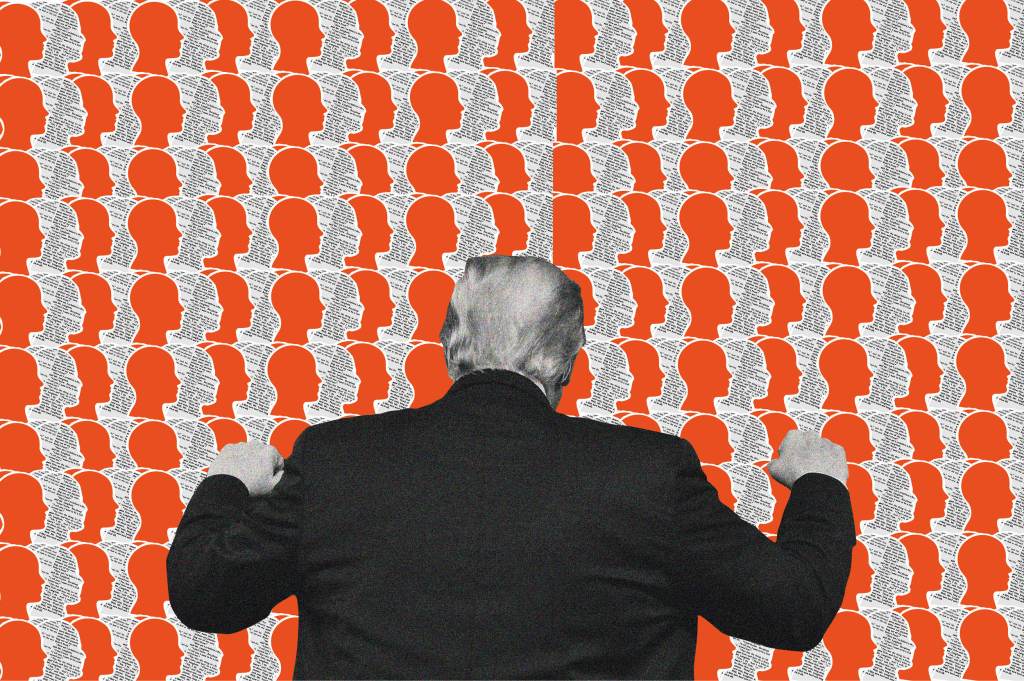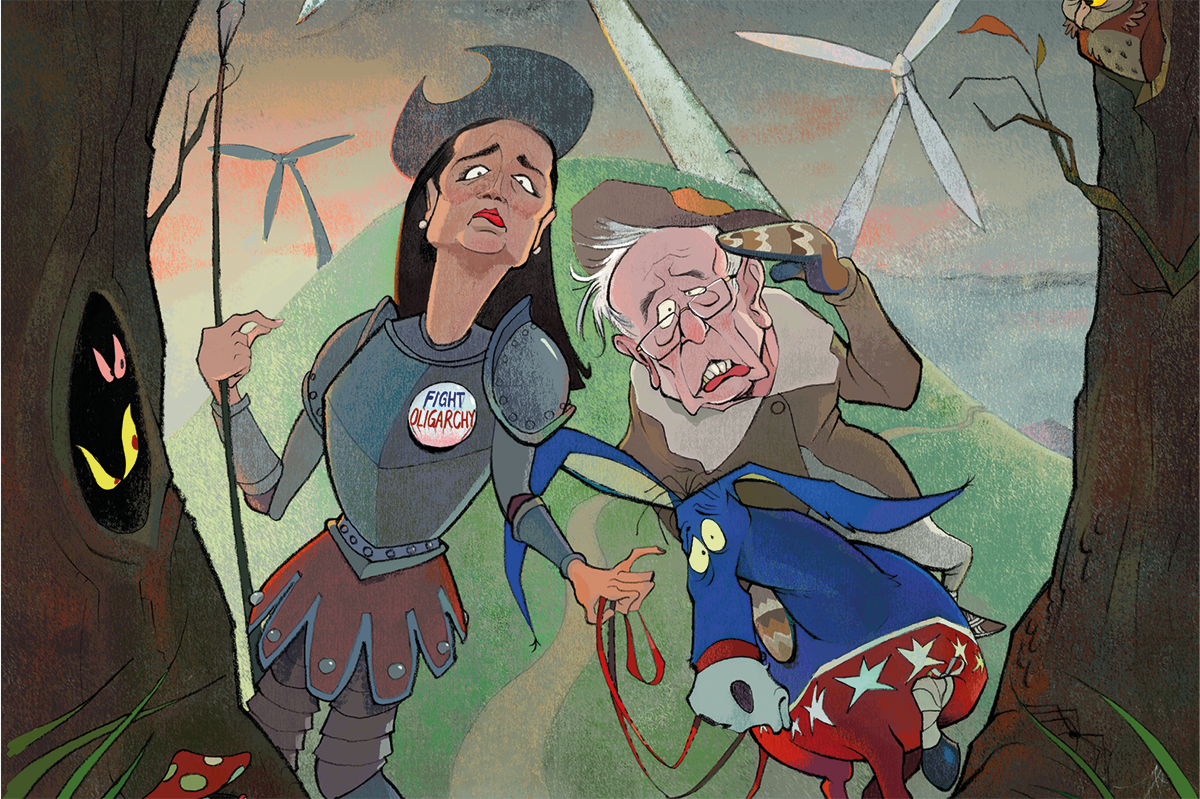Fifteen years ago, populist politicians and parties were seen as a reactionary blip which would soon fade. They are instead not only still present but rapidly gaining strength and power across the developed world.
It’s well past time to wonder if populist sentiments will fade. It’s rather time to consider the heretofore unthinkable: perhaps populism will be to the twenty-first century what labor union-backed social democracy was to the twentieth.
All of us grew up in the world that social democracy created, so it’s hard to grasp that it has not always been with us. But that’s not so. As late as the 1890s, social democratic parties were either weak or non-existent in most of the (admittedly small) democratic world.
That changed quickly as industrialization gained steam. Germany’s Social Democratic Party, the first such party in the world, took sixteen years to reach 10 percent of the vote in the 1887 election. By 1903 it had skyrocketed to first place with 31.7 percent. Similarly rapid rises were found in every other nation with a Labour or Social Democratic party during the early twentieth century.
By 1929, labor-backed parties were powerful everywhere they existed. Five Western nations had labor-led governments by then, and many more would join them by 1940. The nineteenth-century debates between liberals seeking constitutional democracies and conservatives resisting their rise had been utterly transformed into the battle between capital and labor that typified twentieth-century politics.
It’s easy in hindsight to see why this happened. Industrialization upset centuries of tradition as millions of people left farms and towns to work in city-based factories. These people came to see themselves as united by class interest, one that sought to limit the private power held by factory owners and traditional moral authorities such as priests and aristocrats. Armed with the vote, they forced their views to the political forefront and set the terms of debate.
Their rise was fueled by the failure of their foes. Non-socialist parties promised peace and prosperity. Instead, the world experienced war and woe. After the World Wars and the Great Depression, voters everywhere wanted calm. They largely granted social democrats the policies that had driven their ancestors to mad opposition in exchange for continued liberal political freedoms and some semblance of private property and markets. The post-1945 social democratic victory was so thorough that even leaders like Margaret Thatcher and Ronald Reagan could only claw back some of the ground their ancestors had conceded.
This account would be of mere antiquarian interest were it not for the fact that history seems to be repeating itself. Like the early social democrats, modern populist parties either did not exist in 1999 or obtained well under 10 percent of the vote virtually everywhere. Today, right-leaning populist parties regularly receive 20 percent or more of the vote in many countries.
Italy is perhaps the best example. As late as the 2008 election, traditional parties of the left, right and center won about 80 percent of the Italian vote. The election in 2022 saw two right-populist parties, Fratelli d’Italia and Lega, win a combined 34 percent while the centrist-populist Five Star Movement took another 15.4 percent. Prime Minister Giorgia Meloni’s Fratelli alone has risen from 1.9 percent in 2013 to 26 percent in 2022.
Populist ideas and themes have also infiltrated major parties in the United States, Great Britain and Canada. Donald Trump is a populist par excellence with his overt nationalism and call to smash elites. Britain’s Tories won their 2019 majority under the leadership of the brash Boris Johnson, who promised to deliver the Brexit voters had opted for three years earlier, as well as significant government spending to “level up” left-behind parts of the country. Canada’s new Conservative leader, Pierre Poilievre, also opts for “us versus them” themes and targets working-class voters with his policies and rhetoric.
This dramatic surge has already left its mark just as the early twentieth-century social democratic jump did. Back then, existing parties began to create rudimentary welfare states in the hope they would prevent “socialism.” Today, existing leaders rush to limit immigration and subsidize domestic manufacturing, two main demands of the populist right. Fiscal consolidation or austerity seems off the table as traditional center-left and center-right parties compete for the support of economically struggling voters and parties who otherwise might back populists.
This alone would mark populism as an important phenomenon. Social democracy’s prior rise from nonentity to dominant force, however, suggests a more fundamental shift is underway. Populists have already imitated their predecessors’ early achievements. Can they go further and become the paradigmatic twenty-first century political force?
Two factors suggest they can: demographic cohesion and the nature of their adversaries. Populist parties, like twentieth-century social democrats, tend to draw from similar demographic groups regardless of country. It’s not as obvious with them, as there are no formal labor unions providing the social and organizational muscle that powered social democrats. The socioeconomic foundation for populism nonetheless exists.
Populist parties tend to draw from less educated, poorer men. These are not society’s dregs: they work rather than draw benefits. But the same trend persists regardless of nation. Populist support drops as income and education rise, and it is almost always higher among men than among women. Populism also tends to draw support from those who identify as Christians but do not regularly attend services. This tendency is less often measured, in part because many western nations are so thoroughly secular that pollsters tend not to ask about religious belief and observance. A statistical study I commissioned, however, found that 2017 support for Germany’s Alternative für Deutschland rose in Bavaria in direct relationship to Catholic church membership, even after controlling for other factors. This would explain why many populist parties and leaders extol Christian values even as they do not pursue explicitly theological policies.
The demographic solidarity among populists means they have a shared identity that fuels their political activity. They are not, as elites have commonly assumed, motivated solely by transitory anger focused on discrete — hence ameliorable — concerns. They have a worldview based on their experience and framework that encompasses the whole of society. This means they can weather the periodic storms that always beset politics and remain firmly on course.
That worldview can be summed up in one phrase: national solidarity. Populists believe that a nation is more than an agglomeration of individuals. They are motivated to act now because they see such values under attack from the values of the elites who run their countries, and they will not stop until their value set is returned to its place at society’s center. This means populism is essentially driven by a conflict of values, not by concern over specific policies and agendas. Unlike the dominant elite consensus, it favors the particular over the global, the communal over the individual, and the traditional over the novel.
That doesn’t mean that populists are anti-democratic, autarkic or reactionary. They aren’t reincarnated fascists who want to end freedom of speech and install one-party rule. Nor are they opposed to fair treatment of women and sexual minorities. Alice Weidel, co-leader of Germany’s AfD, is a lesbian and Meloni is an unmarried mother living with her child’s father.
It does, however, mean populists want a very different type of society than do the educated, affluent elites whom they battle. Elites benefit from the individualistic society they have created, both economically and socially. Globalization and mass immigration mean they can contract with cheaper foreigners for labor at home and abroad, dramatically increasing their purchasing power. Their education also has trained them to value the novel experience over the traditional one, whether it is searching for exciting new foods or engaging with different cultures. The fact that the rapid adoption of these views has unsettled and disadvantaged large numbers of their fellow citizens does not bother them, so sure are they of their merit and virtue.
This self-certitude leads to the other reason why populism may ultimately become dominant: the elite’s inability to adapt to their failures. The last twenty years have left a long trail of elite-driven policies that led to disaster. The rise of techno-totalitarian China is directly attributable to the blind faith elites had that the pursuit of wealth would transform China’s Communist Party. The 2008 financial crash and the current inflationary spiral were caused by elite economic mismanagement. The culture wars that divide many nations have been caused by elite insistence that traditional mores be disregarded.
In each case, societies were ruthlessly upended. Yet nowhere does one see the type of serious introspection and genuine openness to reform that would be needed for the global educated elites to adapt to facts on the ground. They instead insist that their values and only their values can power the next century.
Their insistence on rapid decarbonization is perhaps the latest example of their intransigence. It’s obvious that rapid implementation of a green agenda will destroy many livelihoods and devastate communities that rely on intensive agriculture, fossil-fuel production of consumables or heavy manufacturing. New groups like the Dutch Farmer-Citizen Movement have arisen almost overnight to protest these developments, often gaining significant support. Yet the elites push forward, confident in their views and overconfident in their chance of success.
This means the chance of catastrophic failure increases with every passing year. What happens if central banks can’t restrain inflation without causing not just recession, but a structurally higher level of permanent unemployment? What happens if China chooses war over Taiwan? What happens if the Green New Deal means economic stagnation or decline for anyone who works outside the knowledge economy? None of these things are good for the elites, but all seem increasingly possible as elite solutions fail to solve elite-caused problems.
This is the confluence of factors that turned social-democratic strength into hegemony a century ago. The Great Depression was caused by elite failure to manage the economic fallout from another elite failure, World War One. World War Two was caused by the elite failure to manage the geopolitical fallout of both earlier failures. Western voters who lived through three decades of war and depression were resolved to never experience that again, and thus created a new consensus.
Elites can forestall a transformation of their world if they are willing to genuinely adapt. But that would involve serious changes to their status. Britain’s aristocrats were wise enough to take that course in the nineteenth century, choosing to guide the shift into the industrial and manufacturing ages rather than fight it. This wisdom was rare, however, as almost everywhere else the alliance between crown and gown that typified pre-modern Europe was cast aside by war and revolution.
This populist future remains, for now, only a distant sight on the horizon. The growing strength of populist movements and ideas show it moving closer. If events continue to take their current course, the world in 2070 will be as different from today as that of 1970 was from 1920.
This article was originally published in The Spectator’s October 2023 World edition.

























